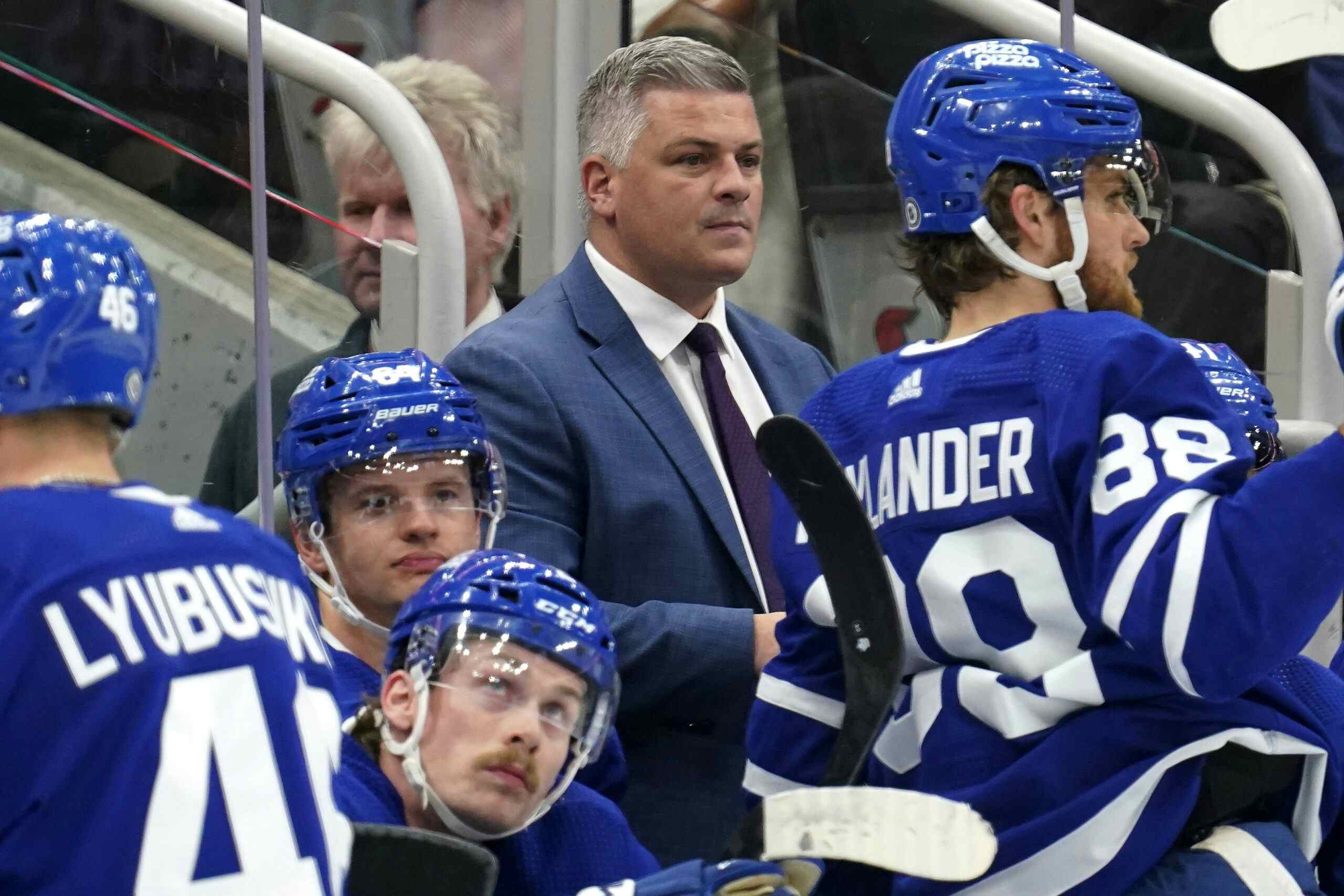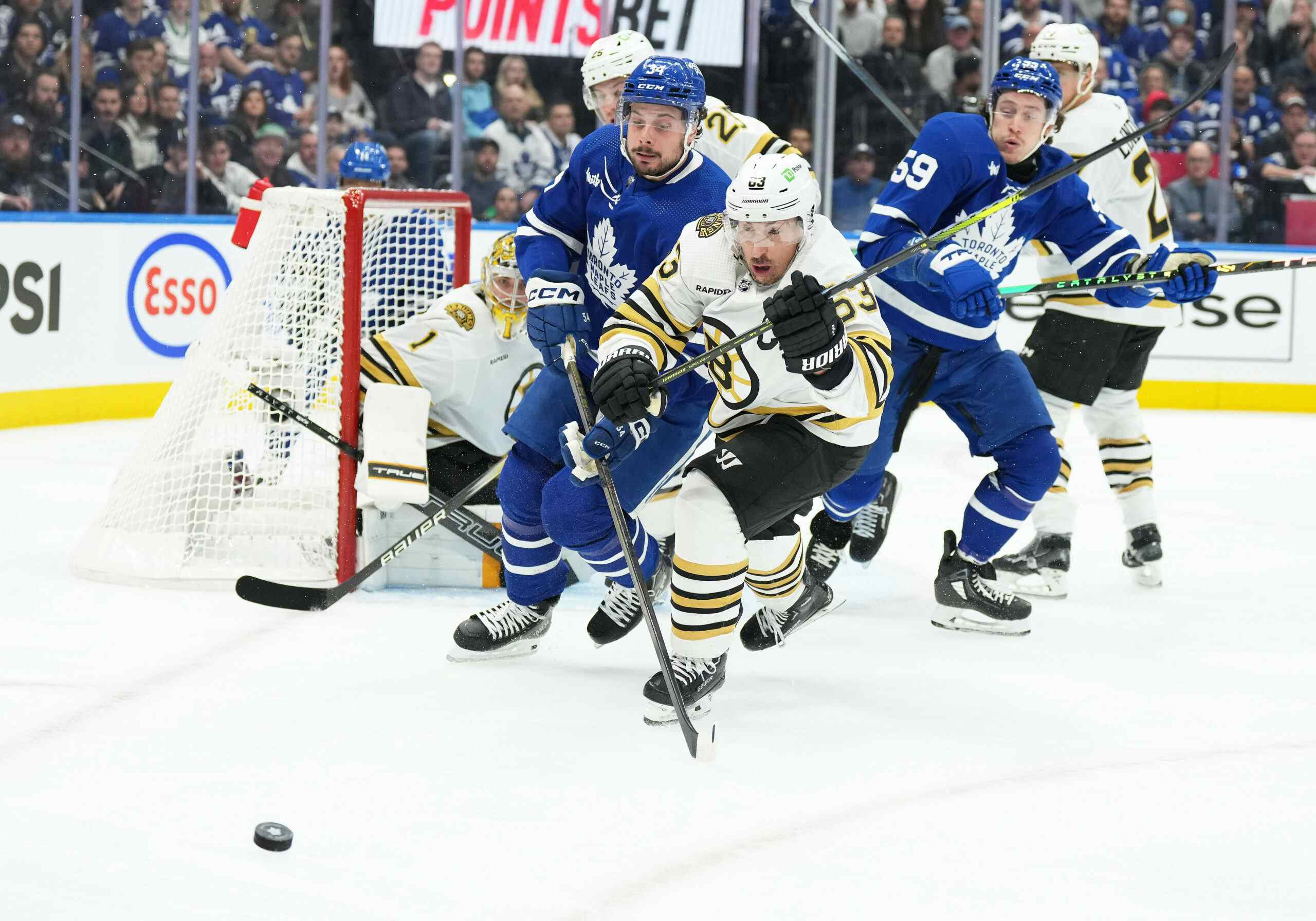Freaky Frattin
By Gus Katsaros
11 years ago
It’s not difficult to get caught up in the hype surrounding the young Matt Frattin. After all, all he does at the AHL level is score goals.
During the regular season all he did was score.
During the playoffs all he did was score.
Then the injury ended his playoffs prematurely.
Even after a difficult summer of rehab and getting his knee back to strength, what did Frattin do upon return?
Dude can score.
He raised the collective attention furthering the whispers of ‘gem’, steal, young exciting prospect.
Since his return from his injury on November 16 he’s scored seven times, good enough for a share of the scoring lead with Jake Gardiner and captain Ryan Hamilton.
So, is he primed to become Alex Ovchkin 2.0 in the NHL?
Let’s talk about Translatable Skills
Girls like guys with good translateable skills
Players are drafted with emerging skills and as prospects, there’s a co-dependent relationship on their parent club to hone those skills in preparation for the highest level. This is development. Challenging prospects to excel by taking their skill set and adapting it to each professional level is the act of development.
Teams pace prospect’s development by using them in situations that challenge their skill sets and evolve into legitimate NHL assets, while they mature both physically and mentally. The goal is to extract the peak combination of skill and intensity with consistency. At each level, prospects get used to time and space restrictions and adjust their skill sets accordingly. In some instances, it becomes clear that players struggle as their skills can’t translate to the next level.
When watching minor league prospects, it’s usually more about the process to the end result than the result itself.
Translatable skills are inherent in a prospect that will be exploited at the NHL level. A scorer in the minor leagues may not have the same skills set – or opportunity – at the NHL level to exploit those skills to continue the ability to score. Sometimes something else must emerge to compliment that scoring skill set.
This is why I pay less stock to NHL equivalency measures. Improvement as a statistical measure at the AHL is not very reliable at this juncture of professional hockey due to missing elements required for advance analysis. Even NHL equivalents are somewhat misleading in that they track an NHL comparable under current circumstance, but lacks some context in the process leading to the result.
With minor league prospects, what I look for are translatable NHL skills in accordance to the four S’s of scouting – speed, skills, smarts, skating in any random order. It’s something specific in the way they achieved their results, rather than the actual result.

Nice Frattin, what does it do?
I feel every NHL player has at least one outstanding quality they exploit in the NHL level and that’s supported by complimentary skills that make them successful. We’re not talking established stars with superior skills, we are trying to identify replacement level to lower roster players that may have something more to offer teams as they play through the minor system.
Sometimes the complementary skills aren’t able to extract the most upside of that one outstanding skill. Think of a sniper with quick accurate shot that can’t skate well enough to keep up to the game as an example of complementary skills holding back potential.
Matt Frattin has an NHL ready shot that almost always lands on net and he has shown that he can find space to let it fly, or get it on and off his stick lightning quick, or bull his way with upper body strength to unleash his shot. That’s not what made him stick with the Leafs our of training camp though in 2011-12.
His compete level, skating ability, tenacity and physical game are also the translatable skills that formed the foundation which earned him a role out of training camp.
The former Hobey Baker candidate had been a scorer in college but he struggled scoring early in the NHL, taking 18 career games to net his first.
A brief stint in the minors brought back that scoring touch.

Frattin fits the description of players playing on their toes, a sentiment echoed in a recent interview of Calgary Flames coach Bob Hartley in a Flames Nation post: “I have always told my players that hockey has to be played on your toes”
How does Frattin envision his own scoring feats in this shortened season?
“As soon as I started playing games, it felt like I was back to where I left off at the end of last year in the playoffs. I’ve felt really good out there. I’ve been put in situations to be able to put up points. Pucks are just going in for me right now.”
Interesting to note that he specifically stated the role thrust upon him and he’s succeeded at it. One would figure that given that same opportunity at the NHL level, he’d be a slam dunk pure scorer. He’s the scorer the Leafs are looking for, right? After all, all he does is score goals, right?
Marlies coach, Eakins, expressed this sentiment about what makes Frattin successful to Jonas Siegel.
"It’s interesting, a guy like that that can shoot the puck and get into open areas I think a lot of people say ‘Well he just has to score’," Marlies head coach Dallas Eakins opined. "Well when he’s finishing his checks he’s getting a ton of chances, when he’s not he’s getting none. So it’s not that he has to score, it’s he has to drive his legs and be physical and the other stuff looks after itself." Eakins has been pleased with the early results.
This is another outlook that makes clear, Frattin’s game isn’t strictly about scoring. It’s about exploiting the chances created by intense forechecking, aggravating physical tools that create space and turnovers. Then finding space and exploiting his shot.
Frankly, a high shooting percentage or any statistical regression is secondary to me, even unnecessary, since that’s not what I find important.
The most important use of his time with the Marlies is to improve his skill set and tie in all the other translatable skills that ensure a successful NHL career. Can those skills translate to a pure scoring role at the NHL level?
I would say no, for now. There is an element missing.
Perhaps one day he could show enough improvement to emerge as an important element on the wing, perhaps as a good third line winger with the ability to counter strike (think David Clarkson), that can also be spotted at a more important role for periods and some secondary power play minutes.
If the foundation for a solid player is there and he can work on aspects of developing his best asset – a quick release, hard and accurate shot, as well as getting into scoring positions – then he’s making the best use of his time as a Marlie.
The translatable skill set is already there.
A hard, dedicated compete level and an equally tenacious forecheck are the skills that kept him in the lineup last season. During his playoff scoring run, he changed up the way he approached scoring, incorporating more creativity and amped up will to bury the puck. It wasn’t just a zone entry and hard shot on goal.
I feel he lacks one quality that would earn him a permanent scoring role – and makes him somewhat predictable. His hands lack quickness and his stickhandling isn’t evolved enough. And it’s not something that develops naturally, so missing this item in an inherent skill set makes it much more difficult to incorporate, especially under the pressure of maintaining an NHL spot.
This video is a good compilation of the skills minus the shooting ability. He recovers the puck in his zone, ‘pushes’ the puck up – not stickhandling, a theme we will revisit shortly.
He demonstrates his overall strength absorbing the hit attempt by Beauchemin, slightly escaping, but applying enough counter force to take down the former Leafs blueliner and then staying on his feet afterward – balance – before setting up as a forechecker as the Ducks set up for the breakout.
His physical game is already mature and he’s shown a penchant for big hits, some that may have bordered on aggressive or reckless.
Nazem Kadri’s overtime winner on Saturday began as a Frattin rush up the boards. The ‘pushing’ effect is fairly evident there with a point between the red line at center to the opposition blueline where his stick wasn’t even on the puck:
As quick as his release on a potent shot, I feel some rigidity and lack of quickness in his hands is a sign of predictability, with his head movements and feet as tells, indicating what he is likely to do on any given rush. I also feel he lacks natural playmaking imagination that adds to the element of predictability.
He’s adapting the play of pushing the puck past a defenseman and bullying his way past, using his upper body strength and improved overall quickness to get behind them for scoring chances.
This is inherent. The last goal also demonstrates that bullying ability to get around a defenseman.
It’s easy to get excited about Frattin’s contributions and seeing him score in bunches is an encouraging sign.
If he ends up being a reliable hard working, checking forward with the ability to bury it should the chance come up, I think that would be already be a success. Should he emerge as a more formidable contributor, then that’s the gravy.
Recent articles from Gus Katsaros





